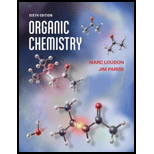
(a)
Interpretation:
The species with the singly charged negative ion and that is isoelectronic with neon is to be named.
Concept introduction:
The two different species that possess the same or equal number of electrons are referred to as isoelectronic species. Their chemical and physical properties may differ from each other.
(b)
Interpretation:
The species with the singly charged positive ion and that is isoelectronic with neon is to be named.
Concept introduction:
The two different species that possess the same or equal number of electrons are referred to as isoelectronic species. Their chemical and physical properties may differ from each other.
(c)
Interpretation:
The species with the di-positive ion and that is isoelectronic with argon is to be named.
Concept introduction:
The two different species that possess the same or equal number of electrons are referred to as isoelectronic species. Their chemical and physical properties may differ from each other.
(d)
Interpretation:
The neon species that is isoelectronic with neutral fluorine is to be named.
Concept introduction:
The two different species that possess the same or equal number of electrons are referred to as isoelectronic species. Their chemical and physical properties may differ from each other.
Want to see the full answer?
Check out a sample textbook solution
Chapter 1 Solutions
Organic Chemistry
- this is an organic chemistry question please answer accordindly!! please post the solution draw the figures and post, answer the question in a very simple and straight forward manner thanks!!!!! please answer EACH part till the end and dont just provide wordy explanations wherever asked for structures or diagrams, please draw them on a paper and post clearly!! answer the full question with all details EACH PART CLEARLY please thanks!! im reposting this kindly solve all parts and draw it not just word explanations!!arrow_forwardPlease correct answer and don't used hand raitingarrow_forwardCurved arrows are used to illustrate the flow of electrons. Using the provided starting and product structures, draw the curved electron-pushing arrows for the following reaction or mechanistic step(s). Be sure to account for all bond-breaking and bond-making steps. Select to Edit Arrows H H Select to Add Arrows > H CFCI: Select to Edit Arrows H Select to Edit Arrowsarrow_forward
